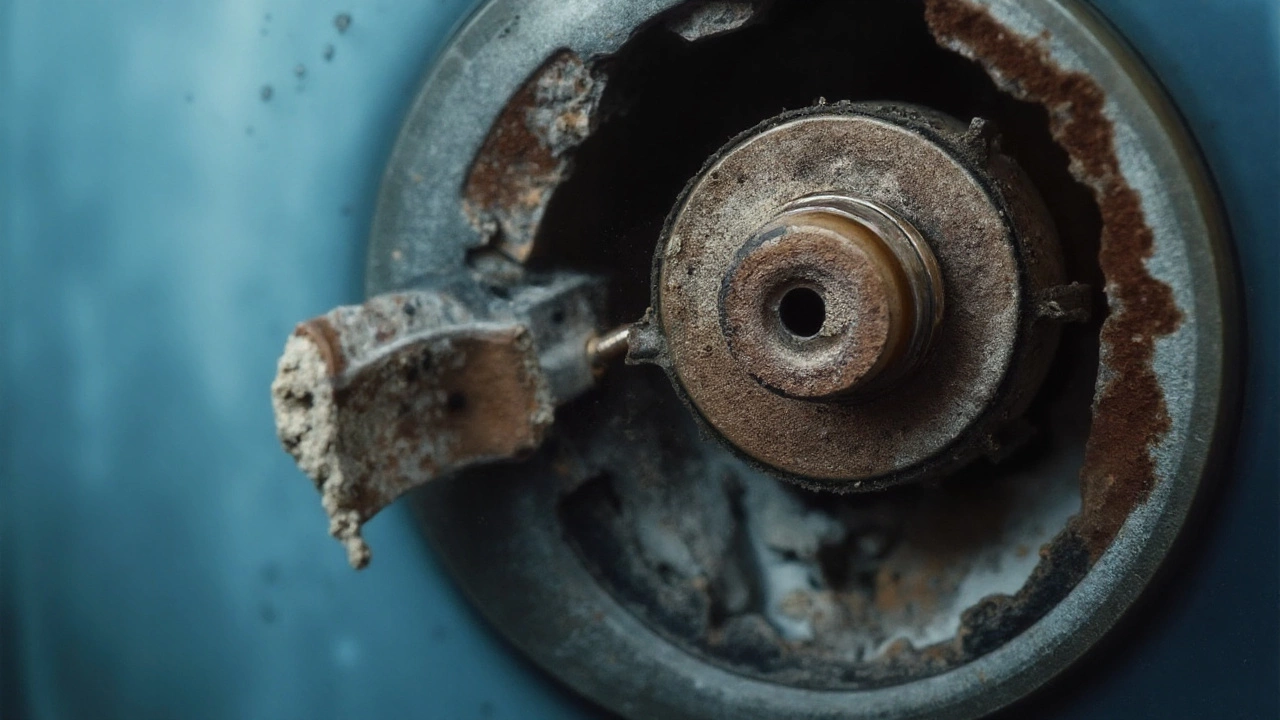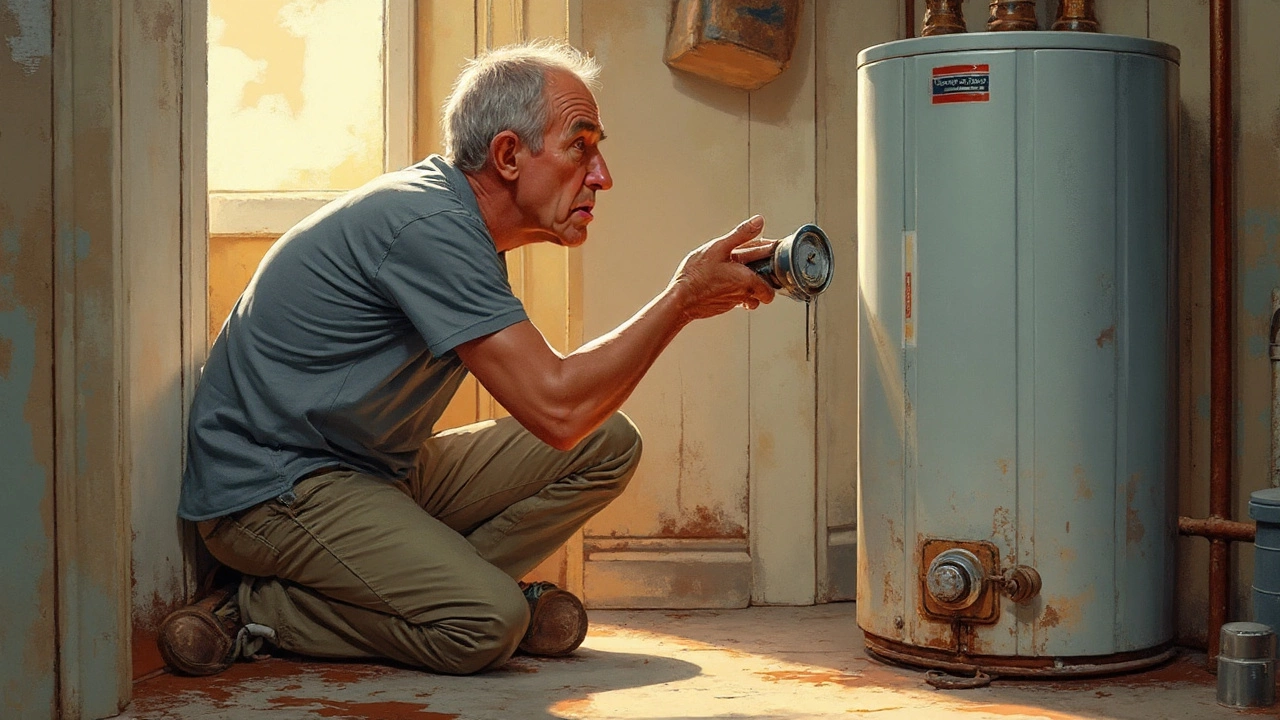When a hot shower suddenly turns icy or your taps only spit out cold water after a long workday, frustration kicks in. It's not just the comfort you miss—hot water is basically woven into our routines, from morning to midnight. Water heaters, especially in places like Perth with its temperature swings, aren't built to last forever. While Whiskers the cat is content with cold bathwater (if he even lets you near him with one), most of us aren’t quite as forgiving. Here's the kicker: most water heaters fail for a handful of predictable reasons. If you’re staring down a lukewarm disaster, chances are you’re facing one of the usual suspects.
The Parts Most Likely to Fail in a Water Heater
Let's break it down. At its core, a water heater isn’t a complicated beast, but a few critical parts tend to take a beating over the years. The first to go, almost universally, is the anode rod. This little metal stick lives inside the tank, taking on the worst so that the steel doesn’t rust. The anode rod sacrifices itself—rusting away so that your tank stays intact. Most people don’t even know it exists until they’ve got rusty water or a leaking heater. Manufacturers recommend replacing this rod every 3 to 5 years. Skip this, and you’re signing up for a rusty, rotten tank and expensive repairs before you know it.
Then there are the heating elements. Electric water heaters use metal coils inside the tank to crank up the temperature. Over time, these elements get coated in mineral deposits, especially with Perth’s hard water. The build-up acts like an unwanted insulator, forcing the elements to work harder until they finally burn out. With gas units, it’s often the thermocouple or pilot assembly that’s first in the casualty line. If your water heater suddenly won’t turn on or keeps shutting off, the sensor could be toast. Luckily, these are replaceable without needing to replace the whole system.
Thermostats seem indestructible—until they aren’t. When the thermostat fails, the water can go from lukewarm to scalding or freezing, catching you off guard more than once. Old thermostats can get stuck, misread the tank temperature, or give up completely. Since safety is a big deal (nobody wants third-degree burns stepping into the bath), it’s one part you can’t overlook.
One more thing: the T&P (Temperature and Pressure) relief valve. If this jams or leaks, you’re looking at a potential ticking time bomb, as pressure inside the tank can build to dangerous levels. Regularly testing and/or replacing this valve is advised, especially if you hear strange hissing or notice any leaks around it.
Why Do These Water Heater Parts Break Down?
Every part eventually fails. But why do some break earlier than you’d expect? Perth’s hard water is one villain—the minerals floating around settle out as scale that eats away at everything it touches. The higher the mineral content in your local water, the faster your heating elements and tank corrode. This also explains why regular ‘flushing’ of the tank is such an important (but usually ignored) maintenance task. I once let our water heater go five years without a flush—big mistake. It started to rumble like a freight train, and the repair guy pulled out huge clumps of chalky gunk during the fix. Lesson learned.
Let’s not forget about water pressure. Every time you hear the water pipes bang or rattle (they call it ‘water hammer’), your heater is taking a beating. High pressure can stress fittings and eventually pop seals and gaskets, which means leaks and possible flooding. If you notice dripping, don’t ignore it—sometimes it’s just a faulty washer, but it could be a sign of larger pressure issues or tank cracks.
Under-heating or over-heating is another silent killer. If you set your heater’s thermostat way too high, hoping for infinite hot showers, the elements will burn out faster. Conversely, low settings can allow harmful bacteria like Legionella to grow—yikes! Aim for a safe zone (around 60°C is the sweet spot in Australia) to save both your skin and your hardware. Remember, your skin may survive a couple of seconds at 70°C, but your heater’s elements don’t even have that option.
Age is relentless. Nothing lasts forever—most tank-style heaters last 8-12 years before you’re rolling dice on every warm shower. The tank itself can actually fail after a decade, and you often won’t see the rust until a pinhole leak ruins your closet flooring. Scheduled maintenance and some routine detective work help catch problems before full-blown disasters.

Recognising the Warning Signs Before Total Failure
Water heaters almost always tell you when something’s about to go wrong. The trick is listening before the problem gets messy—or expensive. First, examine your hot water. If it’s turning brown, rusty, or has little grainy debris, that’s a clear alarm. That’s usually the anode rod begging for retirement or, worse, a corroding tank. Foul or rotten egg smells mean bacteria is making itself comfortable in the sediment at the bottom of the tank. Not exactly the bath bomb you want.
Trips to repair shops around Perth have shown me the waters are littered with burned-out heating elements—and usually, the culprit is all that limescale. When the heater starts making odd noises—think pops, bangs, or rumbling—it's telling you the sediment has turned solid and is trapping water under pressure. Ignore those sounds, and your heater might spring a leak in the most inconvenient spot you can imagine.
Leaks or puddles around the heater base? Never normal. Sometimes it’s just condensation, but constant moisture spells trouble—a loose drain valve, faulty T&P relief valve, or corroded tank. Inspect around fittings, check for rusty streaks, and see if any drips are warm. If so, call in a pro or prepare yourself for a tricky DIY project.
Inconsistent hot water points straight to a sick thermostat or heating element. If your showers swing from cold to scalding with no warning, the thermostat could need replacing. This is especially true if your heater is old—electronics just don’t hold up forever. Liana once shrieked after expecting a cozy bath and getting a polar plunge instead. We wound up on a joint YouTube repair tutorial session that night, and trust me, it’s better to get ahead of thermostat problems before they ruin bedtime.
Pilot lights that keep blowing out or electric models that keep tripping the circuit might suggest under-the-hood trouble. For gas heaters, a dirty thermocouple or compromised pilot assembly is the usual gremlin. Electric models often trip breakers when heating elements short out. Don’t keep resetting it and hoping for the best—find the cause before you’re hunting for a new unit.
Smart Maintenance: Tips to Extend Your Water Heater’s Life
No one wants to replace a water heater earlier than they have to. Regular maintenance isn’t glamorous, but it works. First up, flush your tank at least once a year. Attach a hose to the drain valve and empty several liters until the water runs clean—this shakes loose sediment before it settles in permanently. Use a bucket or run it outdoors if you can; your garden won’t mind a hot water treat. Mark it on your calendar—it takes less than an hour but can double your heater’s life.
Check and replace the anode rod every three years. It’s cheap insurance, and most hardware stores in Perth stock them. All you need is a socket wrench and a bit of patience. If the rod is less than half an inch thick or is coated in calcium, swap it out. That’s the number one secret to avoiding tank leaks.
Inspect the T&P relief valve annually. Carefully lift its lever and let it snap back. A healthy valve will release water briefly and then seal up tight. If it drips continuously or won’t open, change it. This isn’t just maintenance—it’s a safety issue, since these valves stop literal explosions.
For electric models, kill the power and test your heating elements with a basic multimeter. Burned-out elements often show signs of charring or pitting. Replacements are easy to find and snap in with basic tools. For gas units, keep the burner and pilot assembly clean from dust and debris; spiders, amazingly, love to clog pilot orifices (seriously, this happens everywhere in Perth, especially in spring).
Keep the area around your water heater clear. Don’t stack boxes, cat litter, or anything else nearby. Restricting air flow = extra heat and risk. I learned this the hard way when Whiskers knocked over a cardboard box right up against the tank, and things got a bit too warm for comfort. Also, take a peek at the supply lines and joints. Swap out any rusty or corroded fittings promptly—it’s heaps cheaper than repairing flood damage or replacing flooring.
Set your thermostat at the goldilocks temperature—about 60°C. Hot enough to stop mold and bacteria, but not so high that it destroys your element. You’ll also save on your power bill and avoid accidental burns (especially if you’ve got kids or forgetful adults at home).
If your heater is pushing ten years or more, start saving for a replacement. Modern units are way more efficient, and new models in Australia can run circles around anything from the early 2000s. Watch for warranty details—most manufacturers base coverage on installation dates, not purchase. If you’ve been battling constant issues, recurring leaks, or endless repairs, that money may be better put toward a shiny new tankless unit. Trust me, those long, uninterrupted hot showers are worth every cent.
